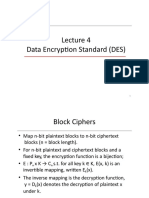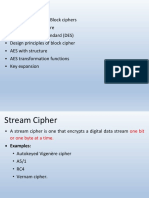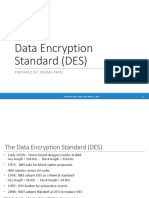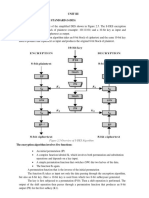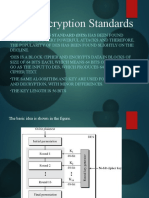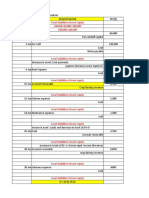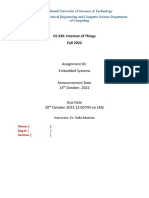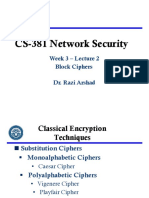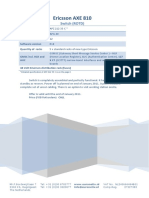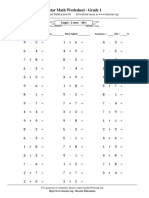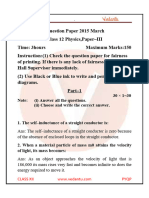0% found this document useful (0 votes)
72 views41 pagesData Encryption Standard Overview
The document discusses the Data Encryption Standard (DES). It describes how DES uses a 56-bit key to encrypt 64-bit blocks of plaintext data through 16 rounds of encryption. Each round uses a different 48-bit subkey generated from the main key. DES encryption involves initial and final permutations and substitutions using E-boxes, S-boxes, and P-boxes. The security of DES has been compromised due to advances in computing power, but it can be strengthened using multiple encryption with two or three keys.
Uploaded by
Hasan AhmedCopyright
© © All Rights Reserved
We take content rights seriously. If you suspect this is your content, claim it here.
Available Formats
Download as PDF, TXT or read online on Scribd
0% found this document useful (0 votes)
72 views41 pagesData Encryption Standard Overview
The document discusses the Data Encryption Standard (DES). It describes how DES uses a 56-bit key to encrypt 64-bit blocks of plaintext data through 16 rounds of encryption. Each round uses a different 48-bit subkey generated from the main key. DES encryption involves initial and final permutations and substitutions using E-boxes, S-boxes, and P-boxes. The security of DES has been compromised due to advances in computing power, but it can be strengthened using multiple encryption with two or three keys.
Uploaded by
Hasan AhmedCopyright
© © All Rights Reserved
We take content rights seriously. If you suspect this is your content, claim it here.
Available Formats
Download as PDF, TXT or read online on Scribd
/ 41



































